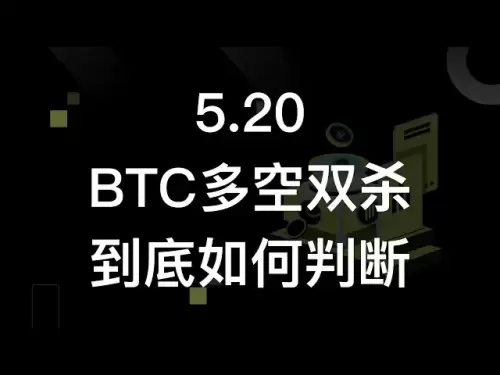 |
|
 |
|
 |
|
 |
|
 |
|
 |
|
 |
|
 |
|
 |
|
 |
|
 |
|
 |
|
 |
|
 |
|
 |
|
Cryptocurrency News Articles
Bitcoin (BTC) Short-Term Holders (STHs) Face Their Biggest Paper Losses
Apr 20, 2025 at 03:30 am
STHs face their biggest paper losses since past bear markets due to recent price drops. Glassnode data shows these holders are down ~$30,000 for every 1% Bitcoin falls

Short-Term Bitcoin Holders (STHs) are currently facing some of the biggest paper losses since past bear markets, according to Glassnode data.
These STHs, typically traders holding Bitcoin for less than 155 days, are showing an average loss of roughly $30,000 for every 1% drop in Bitcoin’s price. This statistic highlights the recent impact of the cryptocurrency’s descent from previous highs.
Highlighting the extent of recent losses, STHs usually begin facing material pain around the $30,000 mark, a level that often serves as a point of panic selling and sharp market swings. This observation has led traders to ponder whether this downturn signals a deep correction or the start of a reversal.
However, Long-Term Holders (LTHs), defined as those holding Bitcoin for over 155 days, are generally remaining profitable with minimal paper losses at present. Nevertheless, there is a brewing risk factor.
Investors who bought Bitcoin at prices closer to the previous highs are now becoming LTHs. If Bitcoin’s price continues to fall, these newer LTHs, who typically entered the market at higher cost bases, will face major losses.
Historically, this group feeling significant pain has signaled deeper bear market trouble and instability.
The current pressure on STHs suggests that selling could intensify soon.
However, periods of strong STH stress usually bring more volatility, which can also indicate that market bottoms are approaching.
Overall market sentiment does remain weak at present.
While this analysis does not directly confirm a bear market, it does highlight the stress that newer investors are facing.
Negative macro factors, regulations, or slower ETF inflows could push BTC prices lower. Yet, history shows that recovery from such phases remains possible.
Past cycles in 2015, 2018, and 2022 show that LTHs usually took large hits after retail traders panicked and sold off completely. This key pattern increases the chance of a delayed second downturn, especially if the economy struggles or overall market mood stays sour.
Disclaimer:info@kdj.com
The information provided is not trading advice. kdj.com does not assume any responsibility for any investments made based on the information provided in this article. Cryptocurrencies are highly volatile and it is highly recommended that you invest with caution after thorough research!
If you believe that the content used on this website infringes your copyright, please contact us immediately (info@kdj.com) and we will delete it promptly.



























































